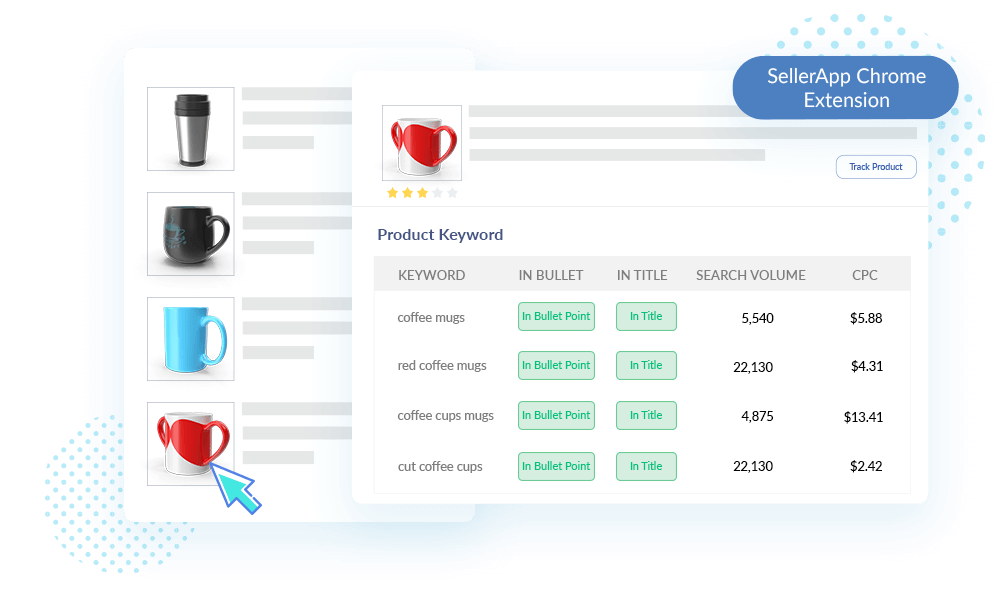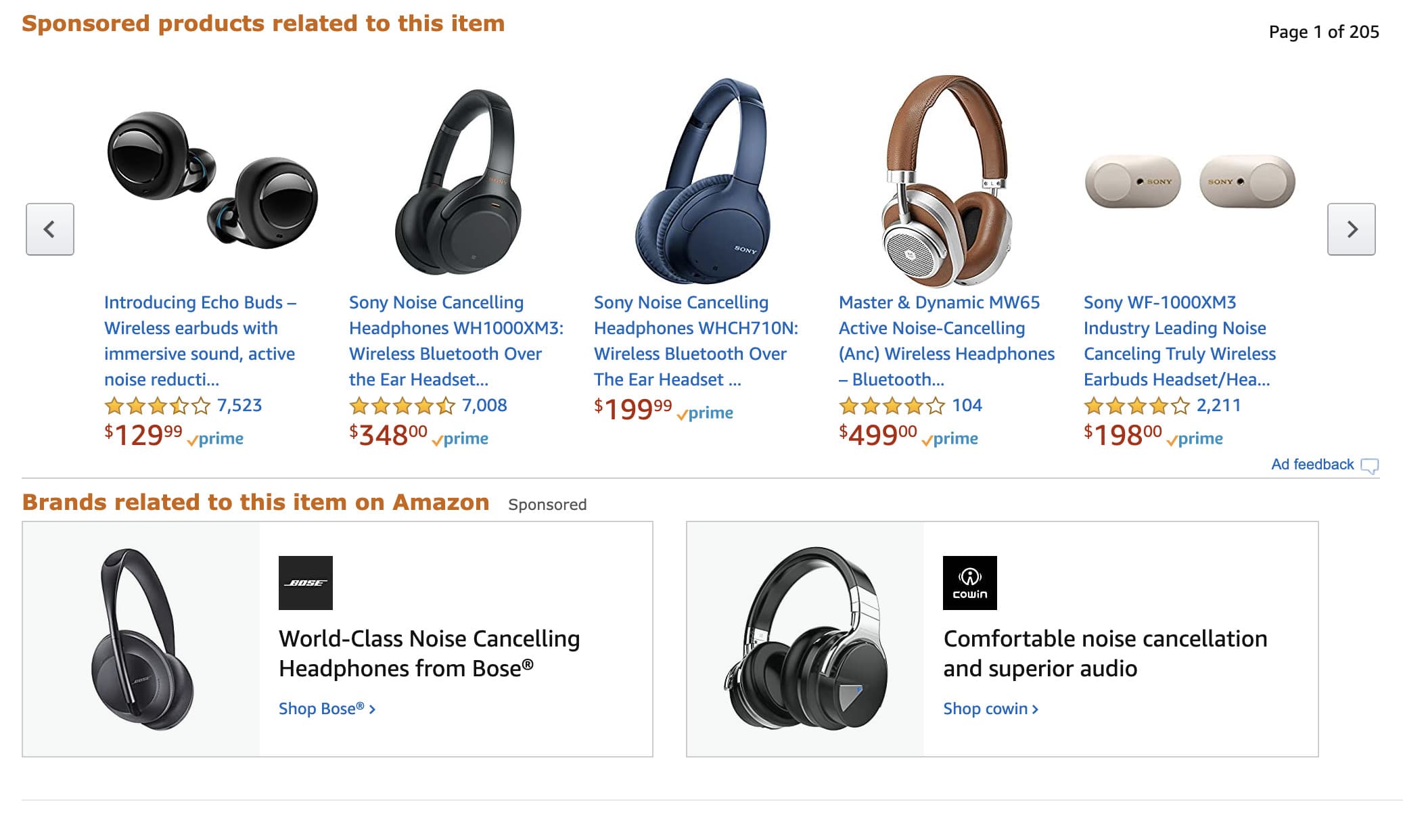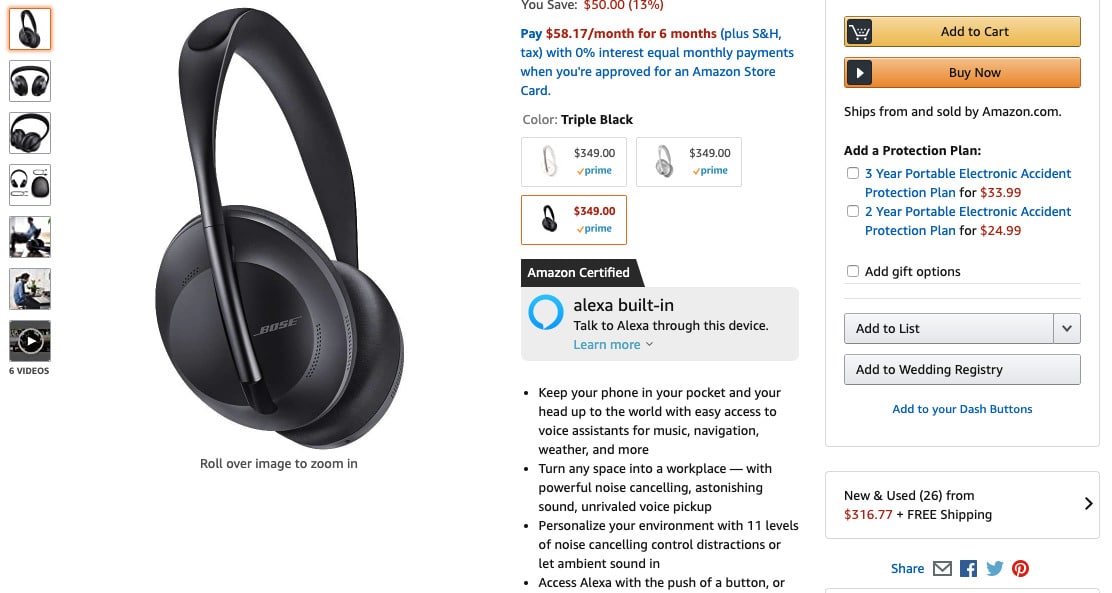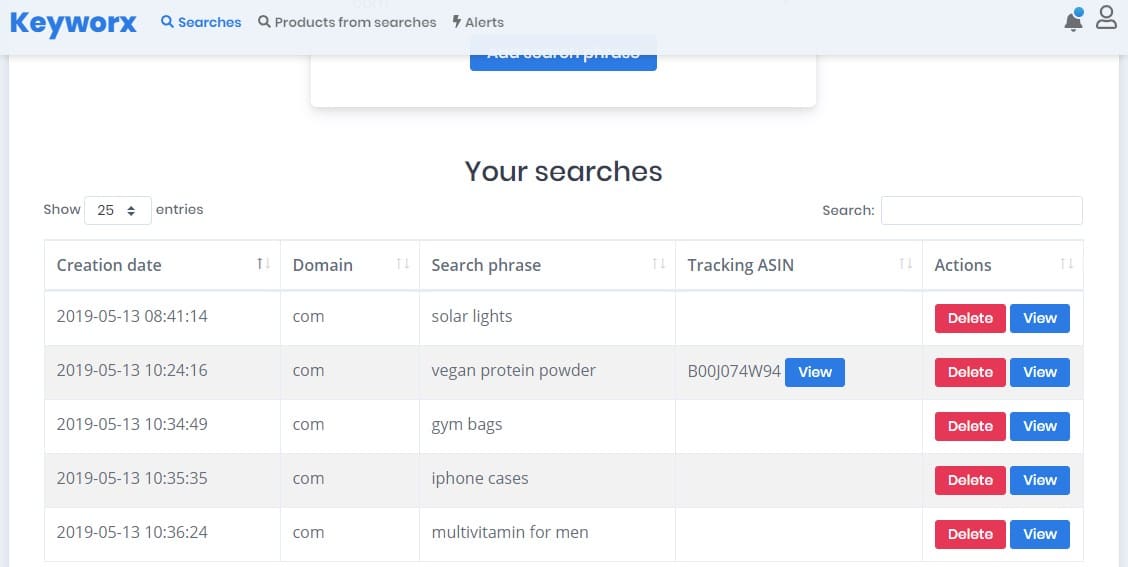Optimize Your Amazon Product Listings For Better Search Results

Selling on Amazon can be a profitable endeavor if you do it right. It’s not as simple as creating a seller’s account and listing a product. There are several important elements at play when it comes to successfully selling products through Amazon. If you’re reading this article, then you already know how vital it is to understand Amazon SEO.
In comparison to Amazon SEO, traditional SEO on a search engine like Google is highly complex. The algorithm that Google uses to rank search results relies on a comprehensive array of ranking factors and signals such as topical website relevancy. This makes sense, considering Google is the world’s most popular search engine, handling over 7 billion search terms every day.
Amazon SEO relies on far fewer ranking factors in comparison. The main difference comes from the fact that Amazon is not primarily a search engine, they are a selling platform. That means that your sales have a direct effect on your Amazon ranking. While Google ranks your site according to clicks and quality of backlinks pointing to your site, Amazon rates your product according to conversions.
You may have already mastered the art of Google SEO. If that’s the case, you’ve got a head start. However, there are some key differences when it comes to Amazon SEO and ranking on page one of an Amazon search. In this guide, I’ll explain how to rank higher on Amazon to help you improve your eCommerce business and generate more sales.
In this article:
Understanding the Amazon A9 Algorithm
Having a general understanding of the Amazon search algorithm is crucial to rank higher in a search query. A9.com is a subsidiary of Amazon that is responsible for the development of search engines and search advertising technology. Thus, the search algorithm used by Amazon is referred to as the A9 Algorithm.
Amazon does not explicitly state the driving factors behind the A9 algorithm. Despite this, there are two factors that clearly influence how a product ranks on Amazon: relevance and sales conversions. Like Google, search results on Amazon are heavily influenced by relevant keywords. Both Amazon and Google consider what keywords are the most relevant when displaying search results. Keywords directly affect what products are displayed in an Amazon search.
It’s important to understand the main driving force for Amazon as a company: sales. Amazon is a business, and therefore, sales conversions are a huge factor in what is promoted in a search result. What does this mean? Products with a high conversion rate will rank much higher than those that don’t.
The A9 algorithm is designed to give a platform to successful products. The more successful they are, the more visibility they gain and their ranking is increased. In other words, products that rank high will get more sales and products that get more sales will rank higher.
So, how do you get your products to sell? I will go over some helpful ways to boost your conversion rates and optimize your page. Let’s take a look at the specific components that go into Amazon SEO and high ranking Amazon listings.
How to Rank Higher on Amazon:
If you’re looking for ways to make money online, selling on Amazon might be what you’re looking for. If that’s the case, you need to understand Amazon’s ranking factors. The better your product page looks, the more sales conversions you’ll make and the higher you rank.
On the flip side, the more optimized your product page is, the more relevant you’ll become which leads to more sales and higher ranking. All this is to say, both relevance and sales are equally important to your success as an Amazon seller
It’s clear that sales and relevance are the most important factors when it comes to Amazon SEO. Now it’s time to talk about the components that influence these two factors. Creating a high-ranking product listing can be broken down into specific details such as your product title, description, important bullet points, and quality images.
As you read the following tips, keep in mind that some are designed to boost your relevance and some are directed at increasing sales. Take a look at these tips to learn how to rank higher on Amazon:
1. Use Relevant Keywords
Amazon SEO is hugely reliant on keywords and for that reason, we’ll be spending a lot of time on this section. Keywords will be your most powerful tool for making relevant listings on Amazon. You’ll want to make sure you get this part right if you want a successful listing.
Conduct Keyword Research: Keyword research should be one of the first steps you take before creating your Amazon listing. The idea of keyword research is to understand what your target audience is looking for and what terms they use when searching on Amazon. If you get an accurate understanding of this, you’ll be far more successful at optimizing your listing.
SEO for Amazon incorporates keyword phrases in many ways. As you begin your keyword research, you should settle on keywords that are only relevant to your product. This may seem obvious, but it’s important to focus on keywords that attract the target audience. You can, however, use a mixture of high and low volume keywords to attract more traffic to your listing.
Keyword volume is a major factor in SEO. It tells you exactly how popular a particular topic or keyword is. High keyword volume means that a lot of people are searching this word or phrase over a specific period of time. High volume keywords should certainly be used when you create your post, just be aware that you’ll be competing against more people using popular keywords. That’s why it’s a great idea to include more specific keywords, with less competition.
Now, because Amazon is not the Google search engine, your keyword research is going to look a little bit different. Traditionally, you’d be using keywords to address a specific problem. With Amazon, your target audience is searching for a product, so your keywords should reflect this. You can still apply the same idea of high and low volume keywords for your Amazon listings.
Next, I’m going to give you some useful tools to help you find the right keywords to optimize your product listing.
Ahrefs Keyword Tool: This tool can help you discover thousands of keywords related to your product listing. Ahrefs will show you the ranking difficulty and helps calculate the potential traffic for each keyword. Ahrefs is used for Google, YouTube, Bing, Amazon, and other popular search engines.
Ahrefs is especially helpful for calculating the keyword difficulty. Keyword difficulty refers to how hard it is to rank with a particular keyword. This can give you a clear idea of which keywords will give you the best chance at ranking on an Amazon search.
This tool accurately determines search volumes per month using clickstream data. Up-to-date search volume data is crucial to the relevancy of your listing. Another helpful feature is the “clicks metric.” Ahrefs actually shows the estimated number of clicks for a specific keyword. You’ll not only see keyword volume but which keywords garner the most clicks.
Ahrefs is not a free tool, however, they do offer a 7-day trial for $7 so that you can try it out. Once your trial is over, the basic package comes in at $99/month. It’s certainly not the cheapest option, but you’ll receive an excellent feature set.

Viral Launch Keyword Research Tool: Viral Launch created a keyword tool specifically to improve Amazon SEO. The data used comes directly from Amazon for an accurate look at keyword metrics. The data used is updated multiple times a week for optimal accuracy. They’ve implemented an advanced relevancy feature so that you can find only the most relevant keywords.
Viral Launch provides historical search volume trends so that users can track an increase or decrease in keyword popularity. The Opportunity Score feature can help you identify which keywords are the most relevant and which have the least competition.
This tool also has a listing builder as a part of the launchpad. This feature makes it easier to create and organize a listing with the best keywords and most relevant copy. This tool will show you an optimization score for your listing and reveal the search volume your listing is earning.
The Viral Launch keyword research tool has a more affordable beginner’s package. The Beginner’s research kit starts at $49.17/month. The Pro Seller kit is $82.50/month and includes several useful features including the listing builder. This keyword tool is an excellent option for a research tool that is customized specifically to Amazon SEO.
Seller App Free Keyword Tool: If you’re looking for a free option, SellerApp has a few free tools for Amazon sellers, including a keyword search tool. To find this tool, visit the SellerApp website and click on “Free Tools” in the menu bar. From here, you can select the keyword search tool. This tool is fairly simple, but it can provide helpful keyword metrics for free.
To use the keyword search tool, type a keyword into the search bar. For example, if I type in “cotton sheets,” I’ll get up to 10 results before even signing up. The search results will give you a list of similar keyword phrases, the search volume, cost per click, estimated order per month and number of products using the keyword. Now, if you want access to more results, you will have to pay for an account. The good news is, they offer a free 7-day trial.

Amazon Hidden Keywords: Amazon product listings have hidden keywords called backend keywords. These are keyword phrases that are hidden from viewers. The function of backend keywords is to further optimize your listing so that the A9 algorithm understands the audience you’re targeting. Backend keywords are great because your product page isn’t cluttered with keywords, but you still have the opportunity to optimize your listing.
You can find this feature by following these steps:
- Log into the Seller Center.
- Go to the Inventory tab in the header.
- Click “edit” on the right-hand side.
- From the “Edit Product Info” screen, select “Keywords.”
There are some restrictions on backend keywords. There are five different sections you can use to fill out and each one has a limit of 50 characters. If you exceed the limit, your keyword phrases will not be indexed, so make sure to stay in the character count. This character count may seem a little bit limiting, but Amazon’s goal is to provide highly relevant search results to shoppers. That just means you need to do your research and find the most relevant keyword phrases for your listing.
Keep in mind the keyword phrases must be a “phrase match.” This means the way you phrase the keywords plays a role. The keyword phrases “cotton sheets white,” and “white cotton sheets” will affect who sees your listing. Here are some more tips to help you use effective backend keyword phrases:
- Avoid using the same word twice. If it’s in your description or title, don’t use it in the backend.
- Avoid irrelevant keyword phrases. Using a keyword that doesn’t appeal to your target audience will hurt your listing and make you rank lower.
- Separate words using spaces rather than commas or semicolons. This will keep the character count down.
- Avoid using subjective words like “awesome” or “excellent.”
- There’s no need to include variations on plural or singular keywords. All keywords are normalized.
Once you’ve posted a listing with backend keywords, Amazon should index the keyword phrases. There’s no official way to know if Amazon has actually indexed the keywords, so you have to do your own investigation. After your listing has been up for 24 hours, you can search your keyword string. If your listing appears in the results, you know that Amazon has indexed the backend keywords.
2. Optimize Product Titles and Descriptions

Product titles and descriptions are another area that utilizes keywords and impacts listing optimization. Titles are extremely important when it comes to searches on amazon and attracting leads. If your title is successful, you’ll gain more traffic to the Amazon product. A great product description can seal the deal and earn the conversion. Here’s how you can optimize your title and product description:
Product Titles: The first thing to keep in mind here, is the general guidelines for product titles. Make sure to follow all of the guidelines, otherwise, your listing will have reduced visibility. Here are the product title requirements from Amazon Seller Central:
- Titles must not exceed 200 characters including spaces.
- Titles must not contain promotional phrases such as “free shipping,” “100% quality guaranteed.”
- Titles must not contain characters for decoration such as “! * $? _ .”
- Titles must contain product-identifying information such as “hiking boots” or “umbrella.”
Now that you know what not to do, let’s look at a few things you should do, to create a great Amazon product title:
- Use full spellings rather than abbreviations
- Include your brand name.
- Include a clear description of the product and its function.
- Specify the size and color if they are limited.
- Capitalize each word in the title except for conjunctions.
Use Title Formulas: If all of these guidelines are overwhelming, there’s no need to panic. You can use a title formula to easily create a product title. Here are some examples of title formulas for different categories:
- Home Appliances: Brand + Model Number + Model Name + Product Type + Color
- Bedding: Brand + Pattern + Thread Count + Material + Size + Product Type + Color
- Cookware: Brand + Model Name + Product Type + Color
You can see the general idea of how to format your title. Always include the most important details of your product listing for the best results.
Product Descriptions: Product descriptions play an incredibly important role in both relevancy and sales conversions. You’ll want to include relevant keywords here and format your description in a digestible way. The description should be written in a natural but convincing way.
These tips can help you pull the customer in with a great description:
- Be creative with your description. Product stats are incredibly important, but a story-like description can speak to the visitor. Something along the lines of this: “Our organic cotton sheets will keep you comfortable for a perfect night’s sleep.”
- Mention the benefits of your product. How will it improve your customer’s life? What problems does it solve?
- Avoid making your description wordy. Overly stuffing your description with words like “best ever” or “best selling, ” for no reason does not benefit you. Stick to the facts to showcase why your product is so great.
- Understand why people are seeking your product. Make sure your description addresses these reasons.
- You are given a character limit, so it’s in your best interest to be concise and effective.
3. Key Product Features
Key product features are an important part of the product description. Product features are formatted as bullet points so that customers can quickly scan the listing. Because of the easy-to-read format, most of your visitors will jump right to these bullet points. You’ll want to make sure you include important information here, to increase the chance of a conversion. You can enter the key product features by locating the “Descriptions” tab.
Amazon Seller Central has some helpful tips for sellers creating product feature bullet points:
- Highlight five important features you want customers to consider, such as dimensions, skill level, warranty, country of origin, etc.
- Stay consistent with the order you list your features. If you list dimensions first, do the same for all of your listings.
- Start each bullet point with a capital letter and do not include ending punctuation.
- Shipping and company information is prohibited in this section.
- Avoid including any information that is not specific to the product.
- Write with sentence fragments rather than complete sentences.

As with your title and description, you should include keywords and phrases in the key product features. Providing the customer with important details like dimensions should be the priority, so find a way to use your keywords in a natural way.
Key product features are not only crucial for relevancy, but they also play a huge role in conversions. This is often the deciding factor that determines if a visitor stays on the page. Remember to include the key benefits of the product and describe why it’s the best version of the product. Creating a great feature set can boost your conversions.
4. Product Price
The price you set for your product is highly influential when it comes to sales conversions. Remember, successful sales is a key part of a high ranking Amazon listing. Setting a competitive price in comparison to similar products will have a beneficial effect on your conversion rates. Competitive prices are a big part of ranking on page one of Amazon search queries.
Pricing your products is like walking a tightrope. You want to find the lowest price possible to stay competitive, but you need to find the highest price possible so that you can maximize your sales. There are a few steps you can take to find the best price for your product:
- Calculate the costs and fees associated with your product. This includes inventory, shipping, marketplace fees, etc. This can help you calculate a base price for making a profit.
- Decide if the product is premium or affordable. If you’re branding reflects a premium product, slightly higher pricing is appropriate. If it is a low-cost product, aim for more affordable prices.
- Aim for consistency. This doesn’t mean you have to keep a set price, but you should stay within the market rate for your product. Auto-pricing can help you automatically adjust prices according to other sellers.
The bottom line is, don’t charge a significant amount more than competing products. Pricing yourself out of the market is the best way to rank low on Amazon. Take a look at the most expensive products on page one. Your product price should not exceed this number by too much. In fact, a safe bet is to price your product at mid-range. This gives you a competitive price while still maintaining a sense of quality.
5. Product Images
Product images are another significant factor when it comes to sales conversions. Your product images relay the quality of your brand to potential customers. Online shoppers are unable to see the product in person before they purchase, so quality images are an absolute must. Your product images need to give potential customers an accurate and genuine idea of the product. Use these tips for great images:
- Use high-quality photography. The images should have excellent lighting and high resolution.
- Use a simple background. Most products on Amazon are displayed against a white background.
- Use multiple angles of the product.
- Enable the zoom feature on all images.
- Include a video of the product in action if applicable.
- Include a photo of the product in its appropriate environment. For example, if you’re selling kitchen products include a beautiful shot of the product in a kitchen.
- Include a picture that gives reference to the product size.
The first picture that appears on your product listing and in a search query, is called the main image. This image should showcase the best representation of the product. Amazon recommends using an image that portrays only the product with minimal props. Amazon provides a list of image standards and restrictions that you should keep in mind when creating your images. If you do not meet the standards, Amazon can remove your images.
Sellers can upload images at the time they create the product listings or anytime afterward. To add an image to your listing follow these steps:
- Select “Manage Inventory”
- Click on the Edit button for the appropriate listing.
- Click “Browse File”
- Choose the images from your computer files.
- Upload the images to your listing.
Consider hiring a professional photographer to shoot your images. Great images will determine your level of trustworthiness for potential customers and increase sales conversions. Combined with an excellent product description and effective key product feature bullet points, beautiful images can seriously increase your product listing.
Tips to Stay Relevant
Once you successfully create a high ranking Amazon product, it becomes a matter of staying relevant. Amazon is a highly dynamic selling platform, so it’s important to monitor your listings and other factors to hold on to that high conversion rate. The most important thing here is to stay flexible. The ability to accurately track your progress and make the appropriate adjustments is key to your success. Here are some tips to help you stay on top of your game:
Track your keywords: Tracking your Amazon keywords is one of the best ways to keep tabs on your performance. Keyword research does not end after you create your listing. If you notice a change in an amazon product ranking, use your keyword tools to monitor and adjust the words you use.
KeyworX is an Amazon keyword tracker tool that can help you keep an eye on your relevant words. They offer an analytics suite to help you adjust your listings for the best outcomes. If your keyword phrases are no longer effective, take a look at the data and re-adjust.

Consider customer satisfaction: Product reviews play an important role in conversions as well. Positive reviews can boost your credibility more than almost any other factor. As a seller, you should be actively responding to all customer questions and issues. When it comes to reviews, both quality and quantity matter. The more positive reviews you earn, the more likely the product is to sell and rank higher.
If you notice a lot of negative reviews, you need to take a look at the complaints. Assess what the major issues are and fix them. Amazon doesn’t tolerate fake reviews, so you’ll have to earn those five-stars with honest product descriptions and images along with good customer service. You can do follow-ups with customers to remind them to leave a review.
Cater to the target audience: Again, Amazon is a dynamic and ever-changing platform. If your product page begins to rank lower, re-assess your target audience. Are you still catering to the group most likely to purchase the product? Continue researching the full extent of who is buying your product. You can increase the traffic to your page by simply adding one or two additional relevant phrases.
You can also pull your audience from multiple sources. If you have a blog, YouTube channel or social media sites, you can use these platforms to direct traffic to your product page. More traffic equals more leads and higher conversion rates. The more sales you make, the better the product ranks.
Check the conversion rate: Another smart way to monitor your listing, is by checking how many units sell each time someone visits the product page. You can do this by logging into Amazon Seller Central and checking the Business Reports. Under this section, you can find the Unit Session Percentage. While this isn’t a true conversion rate, you can still get a good idea of how successful your listing is regarding conversions.
If your numbers are not on par with your goal, you need to modify your approach. Try improving your images or reworking the product description. You also may need to change the product title to attract more traffic to the listing. Use the tips in this guide to make a stronger listing and continue to monitor your conversion rate.
Final Thoughts
There’s no denying that Amazon SEO can be tricky to get the hang of. There are several factors at play that influence how well your product ranks on Amazon. Most experienced sellers agree that relevance and sales are ultimately the most important things to consider with Amazon SEO. Once you understand this, the steps needed to successfully rank on Amazon become much clearer.
Remember the five key factors at play: relevant keyword phrases, product titles, and descriptions, key product features, pricing, and images. Done correctly, these components can make or break your listing and determine the progress of your ranking. As always, strive to remain flexible and adjust as needed as you continue to strive for success.



